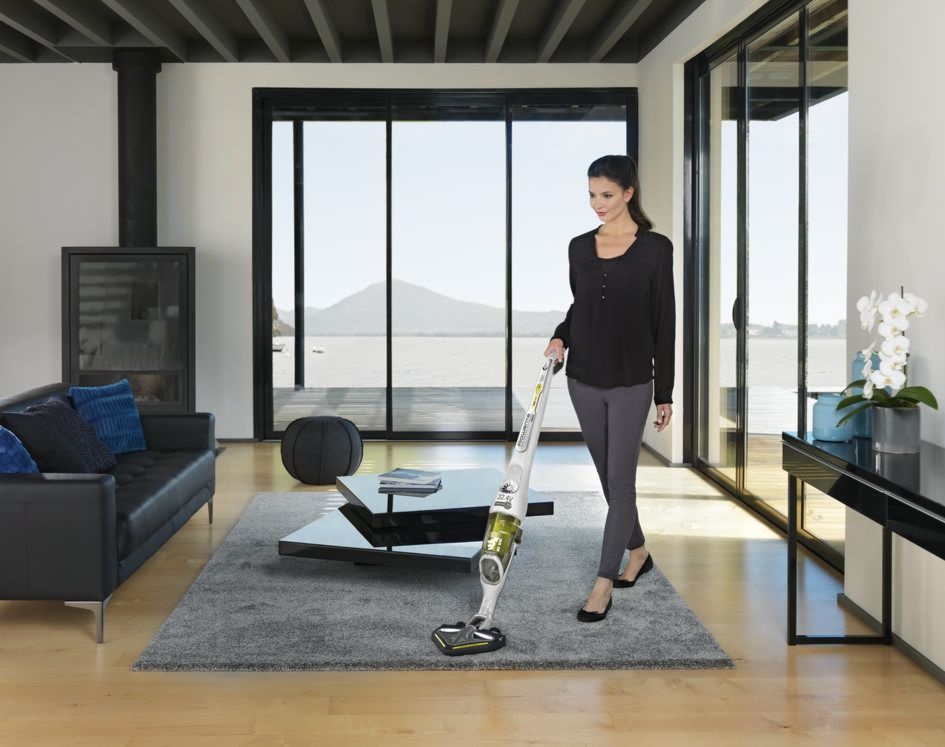User manual and frequently asked questions COMBI STEAM
COMBI STEAM 10-cup coffee pot.Ref : XP1500US
FAQ
Always use cold (straight from the fridge) and very fresh milk. All milks will froth if they are fresh and cold. If you use skimmed milk, long-life skimmed milk will give better results.
Make sure that the container that you use to froth the milk is also cold/chilled. A stainless steel or glass container helps to give the best results.
Milk frothing in 6 Steps:
• Use a suitable size jug and half fill with cold milk.
• Insert tip of nozzle just under top of milk.
• Rapidly open the steam valve, one half turn to the fully open position.
• Move the jug steadily down until you hear a distinctive SSSST…SSSST sound.
• Continue lowering the jug steadily (without shaking), in the manner of a lift, stretching the milk to the top of the jug, creating a dense foam.
• Keep heating the milk until the thermometer (if you have one) approaches 60 °C. Turn off the valve, remove and immediately wipe the steam arm.
Make sure that the container that you use to froth the milk is also cold/chilled. A stainless steel or glass container helps to give the best results.
Milk frothing in 6 Steps:
• Use a suitable size jug and half fill with cold milk.
• Insert tip of nozzle just under top of milk.
• Rapidly open the steam valve, one half turn to the fully open position.
• Move the jug steadily down until you hear a distinctive SSSST…SSSST sound.
• Continue lowering the jug steadily (without shaking), in the manner of a lift, stretching the milk to the top of the jug, creating a dense foam.
• Keep heating the milk until the thermometer (if you have one) approaches 60 °C. Turn off the valve, remove and immediately wipe the steam arm.
Tap water (normal household potable water) is perfectly OK as long as it is free of odors that might alter the taste of the beverage. Bottled water is also OK.
Do not use refrigerated or warm water as this might impact the temperature of the beverage.
Use always fresh water and replace the water if system has not been used for more than 2 days.
For cold beverages, use water at ambient temperature, never refrigerated water, and place two or more ice cubes (20g per ice cube) in the cup.
To be noticed that water hardness is the first reason of machine calcification and so it is recommended to descale the machine frequently (every 3months or less according to water hardness).
Do not use refrigerated or warm water as this might impact the temperature of the beverage.
Use always fresh water and replace the water if system has not been used for more than 2 days.
For cold beverages, use water at ambient temperature, never refrigerated water, and place two or more ice cubes (20g per ice cube) in the cup.
To be noticed that water hardness is the first reason of machine calcification and so it is recommended to descale the machine frequently (every 3months or less according to water hardness).
Poke a fine needle through the blockage. To ensure that the steam nozzle remains clear, always turn the steam knob to the steam position for a moment to blow out any residual milk from the nozzle (putting an empty container below to catch the drops) after making your Cappuccino. Clean the steam nozzle and frothing aid with a damp cloth immediately after the frothing operation.
Scale deposits naturally form in your coffee maker. Regular descaling helps protect your coffee maker and ensures it a longer life. It will also help maintain a quality of coffee that remains constant over time.
Do not wash the espresso accessories in the dishwasher.
Empty the drip tray regularly and, if necessary, clean it and the grid with water and a little mild detergent; then rinse and dry.
The brewing head, filter holder and filter must be cleaned after each use with a damp cloth in the case of the brewing head, and a little mild detergent and water in the case of the filter holder and filter. Rinse and dry.
The warming tray should be maintained in the same way.
Empty the drip tray regularly and, if necessary, clean it and the grid with water and a little mild detergent; then rinse and dry.
The brewing head, filter holder and filter must be cleaned after each use with a damp cloth in the case of the brewing head, and a little mild detergent and water in the case of the filter holder and filter. Rinse and dry.
The warming tray should be maintained in the same way.
Follow the instructions in your personal instruction manual for descaling your machine as techniques vary according to the model you own.
We recommend using the descaling product provided by the manufacturer.
For a daily average usage of 4 cups and if the water is hard, we recommend descaling your machine at least every 3 months.
If you live in an area where the water is very hard, you may wish to descale more often.
We recommend using the descaling product provided by the manufacturer.
For a daily average usage of 4 cups and if the water is hard, we recommend descaling your machine at least every 3 months.
If you live in an area where the water is very hard, you may wish to descale more often.
Yes, if it is coated with scale.
Clean it with water and/or cleaning products recommended by the device manufacturer.
This can prevent clogging in the water outlet and hygiene issues.
Clean it with water and/or cleaning products recommended by the device manufacturer.
This can prevent clogging in the water outlet and hygiene issues.
Check that you are using very fresh and cold milk. Check that the steam nozzle and frothing aid are not blocked.
This can be due to a number of factors:
• There is no water in the tank; fill the tank,
• Your tank is not correctly installed; press firmly on the tank,
• The filter is blocked; the ground coffee is too fine. Clean the filter holder and try a less finely ground coffee,
• The pump is unprimed; refer to the instructions on how to prime it,
• Your appliance has scaled up; descale it,
• The Claris filter cartridge has been changed but not primed; refer to the instructions on how to prime it.
• There is no water in the tank; fill the tank,
• Your tank is not correctly installed; press firmly on the tank,
• The filter is blocked; the ground coffee is too fine. Clean the filter holder and try a less finely ground coffee,
• The pump is unprimed; refer to the instructions on how to prime it,
• Your appliance has scaled up; descale it,
• The Claris filter cartridge has been changed but not primed; refer to the instructions on how to prime it.
The appliance will automatically restart when the power returns and will be ready for a new cycle.
Make sure that the drip-tray has not overflowed and empty if necessary.
Verify that the drip-tray is correctly positioned.
Verify that the drip-tray is correctly positioned.
Make sure the steam nozzle is not blocked.
After turning off your appliance and letting it cool: clean and unclog all the orifices of the nozzle with needle provided.
Unclog the orifice of the steam nozzle support pipe with a needle.
Remove the Claris cartridge.
After turning off your appliance and letting it cool: clean and unclog all the orifices of the nozzle with needle provided.
Unclog the orifice of the steam nozzle support pipe with a needle.
Remove the Claris cartridge.
After following the instructions in the user manual for starting the appliance, make sure that your electrical socket is working by plugging another appliance. If it still does not work, do not try to dismantle or repair the appliance yourself, instead, take it to an approved repair centre
Do not use your appliance. To avoid any danger, have it replaced by an approved repair centre.
Arabica beans give the best flavour and are naturally low in caffeine. Experiment with the different varieties, blends and degrees of roasting to find what suits your taste best. Generally speaking, the darker the roast, the stronger the coffee flavour. Light roasting brings out the full complement of aromas and results in a coffee that is both mild and full of flavour — that of the true connoisseur! Great coffees should only ever be lightly roasted to bring out their true richness, subtlety and complexity. Avoid very dark roasted beans as these tend to be more oily and can clog the machines. Check for any tiny stones mixed up with the beans which may also damage the machine.
The sign of a true Espresso is the froth which is created by pressure within the machine whilst the coffee is being made. The pressure is measured in bars (from 1.5 to 19) so the higher the bar pressure the richer and thicker the froth.
Always keep ground coffee in an airtight container or seal the pack with a bag clip. Keep the container in the fridge to prolong freshness.
An expresso has a stronger aroma than a "normal" coffee.
In fact, an expresso can be distinguished by its rich aroma and the creamy foam on the surface of the cup.
This requires a pressure of 15 bar (achieved only by espresso machines), water heated to 90-92°C and finely ground and measured coffee (7 g per cup).
In fact, an expresso can be distinguished by its rich aroma and the creamy foam on the surface of the cup.
This requires a pressure of 15 bar (achieved only by espresso machines), water heated to 90-92°C and finely ground and measured coffee (7 g per cup).
No, these appliances are specifically designed depending on the type of coffee used.
If you use the wrong coffee, remove it and refill with the correct type.
If you use the wrong coffee, remove it and refill with the correct type.
Medium to fine ground (but not too fine). You can also ask for "Espresso ground".
Your appliance contains valuable materials which can be recovered or recycled. Leave it at a local civic waste collection point.
If you believe that one part is missing, please call Consumer Services Center and we will help you find a suitable solution.
Please go to the “Accessories” section of the website to easily find whatever you need for your product.
Find more detailed information in the Warranty section of the website.




